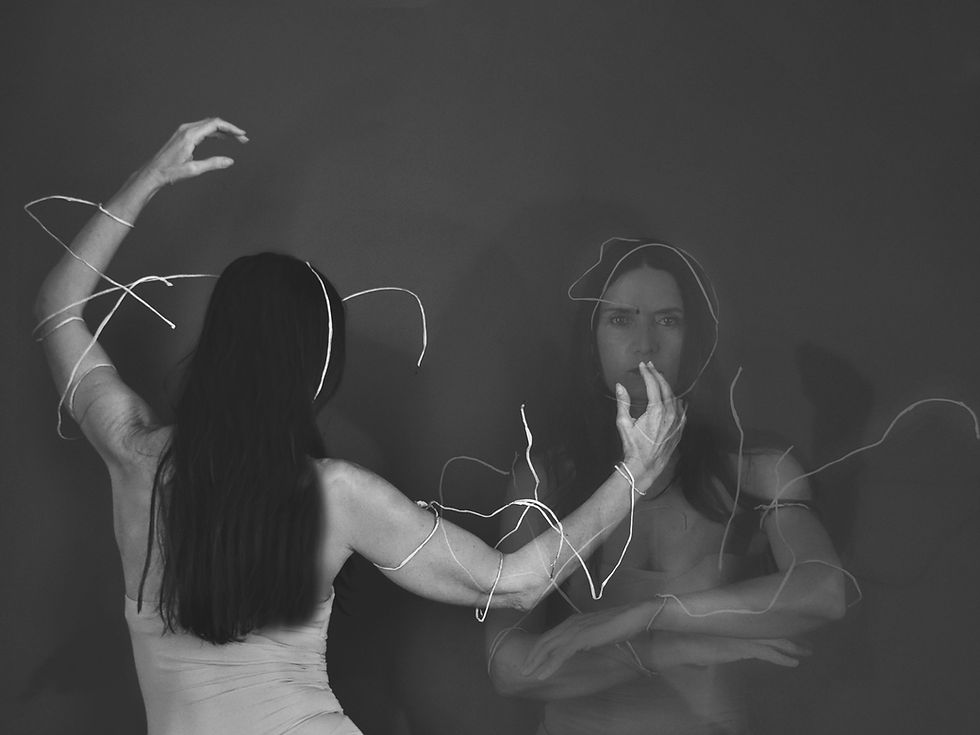Copy or Emanation: When Images Breathe into Us
- Angela Rosana

- Aug 15
- 4 min read
Updated: Sep 29
Not every image is born the same. Some arrive as duplications, calculated replicas of something already seen, already known. Others, however, seem to come from within. They do not copy; they emanate. The difference between one and the other lies not only in the technique, the medium, or the origin. It is, above all, in the relationship established with the viewer. A copy repeats; an emanation spreads. The first serves recognition; the second, presence. We may not always know how to name it, but we feel it. Something in the image reaches us effortlessly, as if it carried a residual warmth, a kind of memory that has not completely faded.
Some images seem to cross through time. They reappear in other contexts as if still carrying traces of the moment in which they were born. Georges Didi-Huberman calls this Nachleben, the afterlife of images, when forms and affects survive and resurface under new conditions. Artificial intelligence also summons images from the past, but through calculated combinations drawn from a vast and impersonal archive. We do not know if the effect is the same. Perhaps this difference lies in the way each one reaches us, or in what we are able to recognize within them.
Why do some images hold us while others pass as if they had never been there? It may be the weight of the instant they carry, or something we cannot name that nonetheless binds us. Roland Barthes called punctum that detail which strikes us in an intimate, almost accidental way, and which does not repeat itself for everyone. It is not about what they show overtly, but about a particular way of existing before us. It is difficult to say where this sensation comes from. It may be in the pause of a movement, in a color that insists, or in the light that seems to have found the exact place. It does not depend on grandeur or clarity. Sometimes, it is enough for the image to seem as if it had breathed before reaching our eyes.
A copy carries within it the promise of repeating what has already been. It can be faithful, exact, even seductive, but it is born without the urgency of the instant. It is reiteration. Emanation, on the other hand, erupts. It does not concern itself with repetition, because it cannot be remade. It is a unique encounter between gaze, matter, and time. In the excess of images that surrounds us, the copy multiplies to the point of dissolving the very notion of the original. Artificial intelligence can take this to the limit, producing replicas of things that never existed, images without a concrete origin.
Emanation, however, demands something that cannot be programmed: a present body, a fragment of the world that offers itself and, for some reason, will never return. What is most intriguing is that, when faced with an image, we cannot always tell whether we are before a copy or an emanation. We may be deceived by perfection or touched by something we do not rationally recognize. It is in this hazy zone that our own perception becomes part of the work: what we feel belongs not only to the image, but also to ourselves. And in this sense, the distinction between copy and emanation is not only about how the image was made, but about how it happens within the one who sees it.
If we accept that emanation is not a fixed property of the image, but an effect fulfilled in the encounter with the gaze, it is possible that even a creation made by artificial intelligence could reach this place. Not because it has lived the moment it represents, but because, somehow, it manages to instill in the viewer a sensation of presence. In that case, emanation would no longer be an attribute exclusive to the human gesture, but a relational, unpredictable phenomenon that can emerge even from an origin without a body. This hypothesis does not resolve the conflict between copy and emanation; on the contrary, it amplifies it, as it forces us to admit that what we feel before an image may be independent of its provenance.
It is in the possibilities of fragmentation, when the whole hints at itself without giving itself away, that emanation reveals itself with greater intensity. A trace, a promise suspended between what is shown and what remains hidden. In the end, the question is not whether the image is a copy or an emanation, but what happens to us after it passes through us. It may vanish into the flow of thousands of others, or remain as a discreet presence, lying in wait, ready to resurface when we least expect it. Between repetition and presence, between origin and effect, what we seek is always the same: an image that gives back to us something we did not know we had lost.
Written By Angela Rosana
Learn more about me here
Discover my authorial work here
This project exists thanks to the images generously shared by artists who join my words to create new meanings.
Viva o Clique is always open to new contributions . You can submit your artwork here
Photographer credits are included on the images, with links to their respective Instagram profiles. Get to know more of their work!
If you enjoyed this article, leave your feedback at the end of the page!
Read more articles here
Visit Instagram
Posts will be published on Instagram starting in August 2025.















Comments